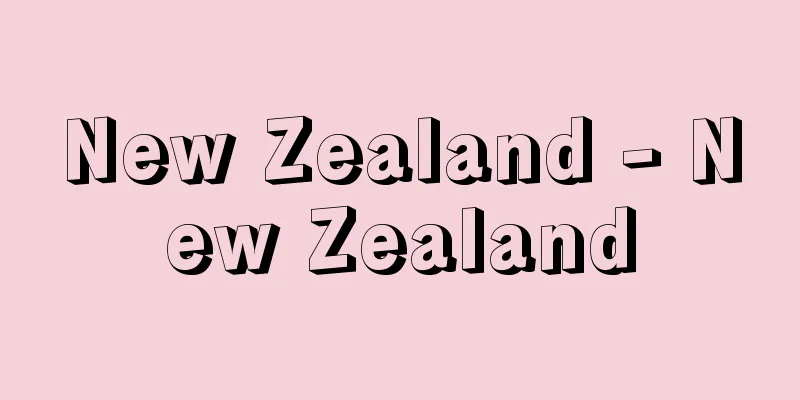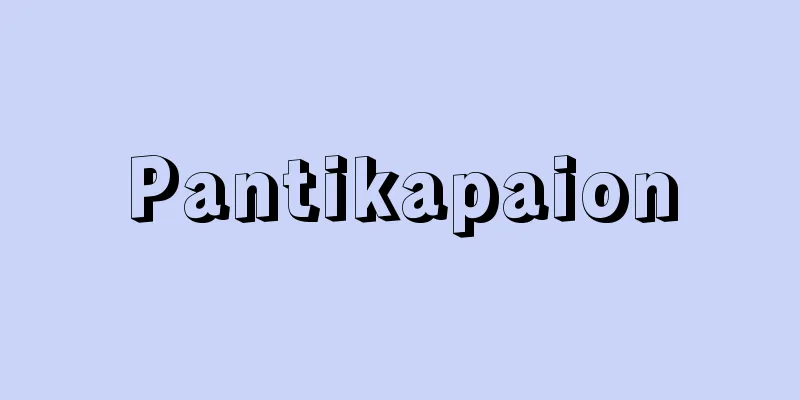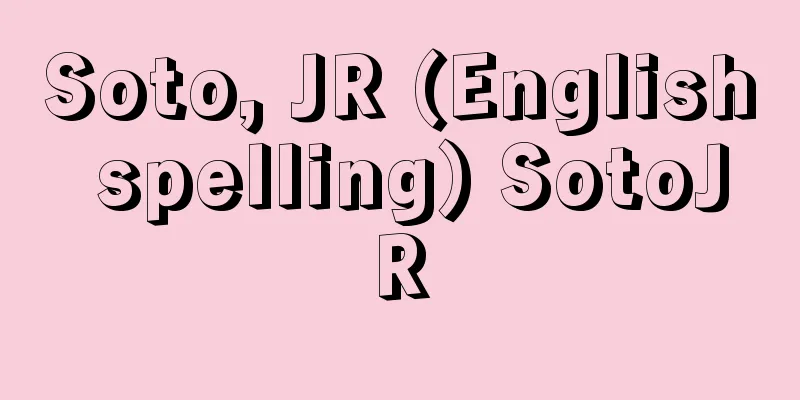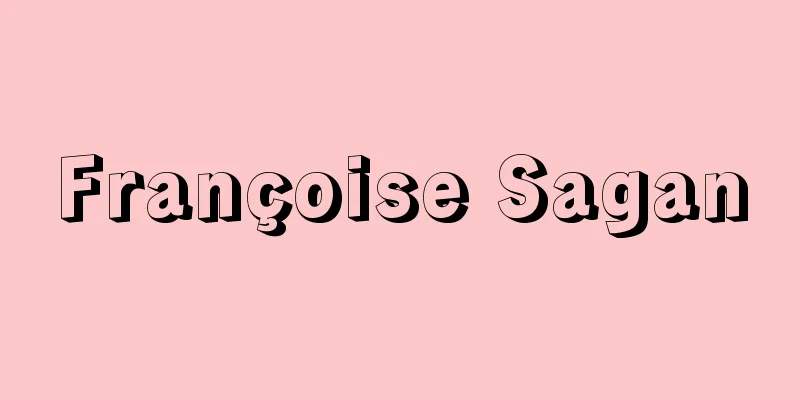New Zealand - New Zealand

|
An island nation in the southwest Pacific Ocean. It lies southeast of Australia, separated by the Tasman Sea, which is about 2,000 km wide. It is mainly made up of two islands, the North Island (115,777 km2) and the South Island (151,215 km2), with the other islands such as Stewart Island and the Chatham Islands. It has an area of 270,534 km2 and a population of 3,737,277 (2001). It is roughly between 33 and 53 degrees south latitude, and between 162 and 173 degrees east longitude. It became a British dominion in 1907, and officially gained independence in 1947. It is a member of the Commonwealth of Nations. Its official language is English. Its capital is Wellington. It also has Tokelau Islands under its administration, and is in a free association with the Cook Islands and Niue (Japan recognized the Cook Islands as a nation in March 2011, and Niue in May 2015). The country's name was first given to the country by the Dutch explorer Tasman in 1642 as Staten Landt (meaning "Southern Land"), but was later changed to Nieuw Zeeland (meaning "New Zeeland"), after the name of a region in the Netherlands. The indigenous Maori people called it Aotearoa (meaning "long white cloud"). The Maori are originally from Central Polynesia near Tahiti, but as a result of accepting a large number of immigrants from Britain since the mid-19th century, 90% of the population is of European descent, and the country has developed differently from other Polynesian islands. Along with Australia, it is one of the countries with a large European population in the Southern Hemisphere, and is a full welfare state with a high standard of living. The flag is the Union Jack, which represents the Commonwealth of Nations, with four stars representing the Southern Cross. There are two national anthems: the British national anthem "God Save the Queen" and "God Defend New Zealand", with lyrics by Thomas Bracken and music by John J. Woods. Since 1977, the two have had equal status. [Takehiro Asagiya and Machiko Aoyagi] NatureTopography and geologyThe country is part of the Pacific Ring of Fire, with the main islands, North Island and South Island, connected north to south to form a gamma-shaped shape. The topography is mountainous and has many volcanoes, with the mountain ranges being particularly steep. Lowlands less than 200 meters above sea level make up only one-sixth of the island's area, and flat land is scarce. Dissected hills or foothills at 200 to 300 meters above sea level make up two-thirds of the island, and the remainder is highland or mountainous land above 1000 meters. The mountain ranges of both the North and South Islands were formed as they are today by the Kaikoura Orogeny from the Tertiary Period to the Quaternary Pleistocene (Pleistocene Epoch). In the North Island, the mountain ranges run through the eastern part, and the central part forms a volcanic plateau of welded tuff called the Taupo Volcanic Zone. Three active volcanoes, Mount Ruapehu (2,797 meters), Mount Ngaluhoe (2,291 meters), and Mount Tongariro (1,968 meters), tower over the island, and hot springs gush out from Lake Taupo to Lake Rotorua in the geothermal area, making it a major tourist destination. At the western end, the cone-shaped Mount Egmont (2,518 meters) towers, also known as New Zealand's Fuji. The Southern Alps run north-northeast-south-west along the west coast of the South Island, and include a series of 3,000-meter-class high mountains, including Mount Cook (3,764 meters), the highest peak of which is Mount Cook. The island has glacial landforms, including glaciers such as the Tasman Glacier and Fox Glacier, and numerous glacial lakes such as Lake Wakatipu, and a large fjord (narrow bay) develops on the southwest coast. The Canterbury Plains, the country's largest, stretch to the east of the mountain range, and the Otago Highlands stretch to the south. [Takehiro Asagiya and Machiko Aoyagi] climateBecause it is located in the westerly wind belt, almost the entire island, except for the subtropical and alpine regions at the northern end, is dominated by a mild west coast marine climate. The average annual temperature is 15.1°C in Auckland on the North Island and 9.8°C in Invercargill at the southern end of the South Island, with the annual range generally ranging from 8 to 9°C, so the difference between hot and cold is not large. Annual precipitation is 1,000 to 1,500 mm in most areas, but reaches 2,000 to 6,000 mm on the western slopes of the Southern Alps. This causes glaciers to form over a wide area, and the glaciers on the western slopes in particular descend to an altitude of nearly 200 meters, weaving through dense temperate rainforest. On the other hand, the eastern side has less than 500 mm in some places, and the föhn phenomenon is sometimes seen, forming a grassland of tussock (a grass family plant). [Takehiro Asagiya and Machiko Aoyagi] FloraIn terms of latitude, New Zealand is in a similar position to Japan, but because of its warm winters, the area covered by evergreen forests is larger than in Japan. The North Island is warm and has a lot of rainfall, so in addition to the giant kauri pine Agathis australis , there are large areas of mixed forests of conifers such as Dacridium, Nagi, and Araucaria, and evergreen broad-leaved trees such as Antarctic beech, Tawa, Myrtle, and Holly, as well as tree ferns. Mangroves can also be seen on the coast. The Southern Alps run north to south in the South Island, so the vegetation is divided into two. The west side of the mountain range receives more rainfall and is covered mainly with Antarctic beech forests, while the east side is dry and consists of dry grass steppe. In the mountains, low forests of conifers such as Fagus (species such as Nothofagus cliffortoides ), Libocedrus (species such as Libocedrus bidwillii ) and Calamus are found. New Zealand has about 1,850 species of plants, including ferns and seed plants, of which more than 78% are endemic. In addition, New Zealand has 40 endemic genera, such as Alseuosmia (Caprifoliaceae), Rhabdotamnus (Gesneriaceae), and Shawia (Asteraceae), and is classified as the New Zealand region in the flora region. In addition, New Zealand shares common genera with southern South America, Tasmania, and the sub-Antarctic islands, such as Abrotanella , Diksonia , Leptocarpus , Libocedrus , and Nothofagus , so it is classified as the Antarctic kingdom. New Zealand also shares species with the neighboring Australian kingdom and the Paleotropical kingdoms such as New Guinea. In high mountains, there are genera such as Rhizome, Gentian, Ranunculaceae, and Onagraceae, which are similar to the Holarctic kingdom. From an ecological perspective, there are many places where the vegetation and flora have been destroyed by grazing sheep and other animals, and where the natural environment has been disturbed by non-native species brought in from Europe and other places. [Tatsuyuki Ohba] FaunaNew Zealand is an extremely ancient island, characterized by ancient fauna that date back to the end of the Jurassic Period, more than 100 million years ago, but with the introduction of new fauna by Maori settlers and Europeans in the 18th century, many of New Zealand's native animals have been driven to extinction or near extinction. The only mammals originally inhabiting New Zealand are two families of bats. One of these is endemic and the other is Australian. There are over 250 known bird species, which are divided into globally distributed, Australian and endemic. The birds endemic to New Zealand are characterized by those that are flightless due to degenerated wings. In addition to the kiwi, famous as the national bird, the rails and the extinct moa, one species of goose, the New Zealand wrasse (a passerine), and the nocturnal owl-parrot are also flightless. It is believed that the lack of predators allowed these flightless birds to evolve. Among reptiles, a primitive tuatara lizard that became extinct in other regions 100 million years ago still survives. There are no snakes or turtles, and one species of gecko is an endemic ovoviviparous species. The only amphibians remaining are primitive frogs (genus Leiopelma ) that retain their tails for some time after metamorphosis. Freshwater fish did not originally inhabit the area. The only animals brought by the Maori were dogs and rats, but the Europeans introduced many other animals, including deer, chamois, cats, weasels, rabbits, hedgehogs, pheasants, pigeons, geese, thrushes, crows, sparrows, and freshwater fish such as trout, for hunting, furs, and as pets. Due to the destruction of habitats caused by feral introduced animals and livestock grazing, the native animals that originally inhabited New Zealand rapidly disappeared. Currently, efforts are being made to protect the native species, such as by establishing protected areas. [Akio Nizuma] GeographyNorth Island76% of New Zealand's population lives in the North Island. Taking into account the natural environment and administrative divisions, the country is divided into eight regions: (1) Northland, (2) Auckland, (3) Waikato, (4) Central (volcanic plateau), (5) Taranaki, (6) Manawatu lowlands, (7) Wellington, and (8) Eastern. (1) Northland in the north was once covered with kauri pine forests. Europeans such as whalers, merchants, and missionaries visited the Bay of Islands in the east early on. Waitangi, where the Treaty of Waitangi was signed in 1840, is also located in this area. (2) Auckland is the country's largest city with a population of 1 million, and is the center of commerce and industry. It is now a multi-ethnic city with many immigrants from overseas, including Maori and Pacific Islanders. (3) The Waikato region, centered on Hamilton, is blessed with fertile soil and is a thriving agricultural region. (4) The central part is a volcanic area containing Tongariro National Park, with the highest peak being the volcano Ruapehu, 2,797 meters above sea level. There are tourist spots such as the Rotorua Hot Springs and Lake Taupo. (5) Taranaki in the southwest is the foothills of the beautiful Mount Taranaki, which resembles Mount Fuji, and is the country's largest producer of natural gas. The capital city is New Plymouth. (6) Dairy farming is thriving in this area, and it includes the cities of Wanganui and Palmerston North. (7) Wellington was the first settlement by British immigrants, and has been the capital and political center of New Zealand since 1865. Because of the hilly terrain behind it, residential areas extend into the Hutt Valley in the north. (8) The east coast is a sheep-farming and beef cattle region, but forestry and horticulture are also carried out in Napier and Hastings, and Gisborne is a fishing port. [Machiko Aoyagi] South IslandThe Southern Alps run north to south through the centre of the South Island, with the west side of the mountain range receiving more rain and the east side receiving less rain. The region is divided into (1) Cook Strait, (2) Westland, (3) Canterbury, (4) Otago, (5) Southland, and (6) Chatham Island. (1) The Cook Strait region is home to horticulture and beef and dairy cattle breeding. (2) Westland is sparsely populated, with coalfields in the north. (3) The Canterbury Plains is a mixed agricultural region of wheat and sheep, and Christchurch is the country's second largest city. Hydroelectric power is thriving in the mountainous region to the west. (4) This area once boomed with the gold rush, and Dunedin was founded by immigrants from Scotland. (5) Milford Sound and Queenstown are centers for fjord tourism. (6) Chatham Island is an island off the coast of the South Island, and is home to the Polynesian Moriori, who are said to have arrived here before the Maori and were wiped out by them. [Machiko Aoyagi] historyIndigenous MaoriThe first settlers in New Zealand were the Maori, originally from Central Polynesia. It is believed they first arrived in the area around the 8th century, but it is said that a large-scale migration of seven canoes took place in the mid-14th century. On this migration, the Maori took with them the food they needed, but many tropical plants did not grow here, so they were forced to adapt to a new environment. Sweet potatoes and fern roots became the staple foods of the Maori in this area. The large flightless bird, the moa, was hunted to extinction by the Maori. [Machiko Aoyagi] Exploration and colonizationThe first European to visit this area was the Dutchman Tasman in 1642. The British explorer Cook followed, making several expeditions. In the 18th century, seal hunters, flax and timber traders, and whalers from Australia, which was already a British colony, began to visit the area. Christianity was also introduced to the area in 1814. In 1840, British Navy Captain Hobson signed a treaty with the Maori chiefs at Waitangi in the Bay of Islands on the North Island, making the area a British colony. The treaty consisted of three articles: (1) the Maori chiefs would transfer all of their rights to the British Crown, (2) the British Crown would fully guarantee Maori land, forests, fisheries, etc., and (3) the Maori would be given the privileges of British citizens. It was initially incorporated into Australia, but became an independent colony in 1841. [Machiko Aoyagi] Founding of the colonyEdward Gibbon Wakefield (1796-1862) dreamed of establishing an ideal colony on this land and founded the New Zealand Company, whose first immigrant ship arrived in Port Nicholson (now Wellington) in 1840. The company subsequently established settlements in Taranaki, Whanganui and Nelson on the South Island. In the mid-1850s, immigrants arrived one after another and their numbers began to exceed that of Maori. The colonists demanded land. At first, Maori did not understand the meaning of sales and gave up their land for small everyday items, but they felt a sense of crisis and formed a land non-sale alliance to oppose the government. This led to the Land War that began in Taranaki, and the two sides fought intermittently from 1860 to 1872. As a result of this war and the land confiscations that followed the war, Maori lost most of their land. Meanwhile, in the 1850s, gold mines were discovered in the South Island one after another, and many people migrated to Collingwood, Otago, and Westland in pursuit of the richer gold mines. During the Gold Rush, Dunedin was the largest city in the country. New Zealand's gold exports peaked in 1866. [Machiko Aoyagi] History as an independent nationSeddon, a Liberal Party member who became prime minister in the first election after women's suffrage, established the Old Age Pension Act, promoted legislation to protect workers, and established the foundations of today's welfare state, including regulations on working hours and minimum wages. In 1907, New Zealand became a self-governing dominion and gained substantial independence, but in World War I, New Zealand assisted Britain in fighting on the European front and suffered heavy human casualties, losing one-sixty-fifth of its population at Gallipoli in Turkey. In 1919, New Zealand joined the League of Nations. The global depression around 1930 also hit New Zealand, with unemployed people flooding the streets and riots breaking out in several cities in 1932. In the midst of this economic turmoil, New Zealand's first Labour Party government was formed in 1935 under Michael Joseph Savage (1872-1940), and it moved in the direction of further strengthening worker protection and social welfare. In World War II, Japan participated in the Allied forces, but this was not due to any fanatical love of country for Britain, as in World War I, but rather to defend the country in the Pacific. In 1947, after the war, Japan also achieved independence from Britain in diplomatic affairs. After the war, cooperation with the United States became a major pillar of Japan's diplomacy in terms of security. [Machiko Aoyagi] PoliticsIn 1949, the National Party formed a government, and since then, the two major parties have alternated in power: Labour Party (1957), National Party (1960), Labour Party (1972), National Party (1975), Labour Party (1984), and National Party (1990). In the 1996 general election, the leading National Party formed a coalition government with the New Zealand First Party. In 1997, National Party leader Jennifer Shipley (1952- ) became the country's first female Prime Minister. [Machiko Aoyagi] Domestic politicsIt is a constitutional monarchy headed by Queen Elizabeth II of the United Kingdom, and the monarch's powers are exercised by a Governor-General, who serves a five-year term. From 1985 to 1990, the Governor-General was a Māori, and from 1990 to 1996, the Governor-General was a woman. The electoral system was established in 1852, and Māori men were granted the right to vote in 1867. A Māori special ward was created at this time, with four seats reserved for Māori. Women's suffrage was also introduced in 1893, a pioneering move by the country, and was extended to the right to run for office in 1919. Currently, both men and women aged 18 and over have the right to vote. Since 1951, the country has had a unicameral parliament. In 1993, a national referendum was held to change the electoral law, which overwhelmingly voted in favour of a mixed-member-proportional system (MMP), in which each voter has one vote to elect a candidate for his or her constituency and one vote to elect a political party. The new electoral law increased the number of Māori members from 99 to 120, of which 64 are elected and 56 are party members. Māori seats were increased from four to five, and 15 Māori members were elected in the 1996 election: six constituency members and nine party members. The distribution of seats by party in the 1996 general election was as follows: National Party (44), Labour Party (37), New Zealand First (17), Coalition Party (13), Act New Zealand (Consumer and Taxpayers Alliance, 8), and United New Zealand (1). The leader of the majority party becomes the Prime Minister. The Cabinet, consisting of the Prime Minister and up to 20 other ministers, is responsible for government policy-making. The Ombudsman was established in 1962 and is responsible for investigating complaints from citizens regarding the administration. The judiciary exists independently of government authority, and judges are appointed by the Governor-General. Laws are enacted by Parliament and British common law, and there is no constitution. There are three courts: the District Court, which handles minor crimes; the High Court, which handles all major cases; and the Court of Appeal, which handles appeals. If you are not satisfied with the decision of the Court of Appeal, you can appeal to the Privy Council in the UK. In 1975, the Waitangi Tribunal was established as an institution to handle and resolve Maori complaints, and it has been working to compensate Maori for damages caused by Europeans since 1840. [Machiko Aoyagi] DiplomacyAs a member of the British Commonwealth, Australia and the UK share a common history and customs, and for many people, the UK is still their homeland. Currently, Australia has the closest relationship with Australia, its sister country. In 1983, the Closer Economic Partnership Free Trade Agreement (CER) was signed between the two countries, allowing free trade of goods and services. In 1952, Australia and the US signed the ANZUS Treaty (a military alliance), but relations with the US cooled in 1985 due to the Labor government's non-nuclear policy. Efforts are underway to normalize relations between the two countries under the National Party government. As the country is located in the South Pacific, it is currently seeking closer ties with the Asia-Pacific region, and is promoting economic cooperation through the Pacific Islands Forum (PIF). With the Pacific nations, it launched a strong opposition movement against French nuclear testing. [Machiko Aoyagi] National DefenseNew Zealand has three services under the Governor-General: Army, Navy and Air Force. The regular military consists of 4,500 troops in the Army (2 infantry battalions, 1 artillery battery, etc.), 2,150 troops in the Navy (3 frigates, 4 patrol boats, etc.), and 3,220 troops in the Air Force (2 ground attack fighter squadrons, 1 maritime reconnaissance squadron). The defense budget for 1996 was $728 million. Conscription had been in place since 1950, but this was replaced by a selective training system in 1962, and has been volunteer since 1970. The Labour government, which did not tolerate nuclear-weapon-carrying or nuclear-powered ships doing port calls, rejected a request for a US ship to dock in 1985. As a result, the US suspended its obligation to defend New Zealand, and the ANZUS alliance, which had existed since 1952, was effectively terminated. [Machiko Aoyagi] economyOverviewIn the fiscal year 1996 (July 1996 to June 1997), the budget revenue was $33.243 billion and the expenditure was $32.87 billion. New Zealand's economy is characterized by its high dependence on trade. Primary products such as dairy products, meat, and wool account for 40% of total export revenue. The proportion of the workforce in the primary industry is also higher than in other developed countries. In the past, the government intervened heavily in the economy, and the proportion of state-run businesses such as finance, transport, communications, power, resources, and tourism was high. However, since the 1980s, administrative reform, deregulation, and privatization have progressed, and foreign exchange transaction restrictions, import licensing systems, and subsidies to manufacturers, exporters, and farmers have been completely abolished. It is now considered the most liberalized economy in the world. As a result of privatization, state-run assets were sold and the proceeds were used to repay debts, so the debt, which had reached $15.9 billion, was reduced to zero in 1996. [Machiko Aoyagi] Energy and Mineral ResourcesThe abundant rivers are used for hydroelectric power generation, which meets 70-80% of the country's total electricity demand. Power plants on the South Island transmit electricity to the more populous North Island via high-voltage undersea cables. The remaining electricity is made up for by oil and gas, with geothermal steam also being used for generating electricity. Nuclear power generation has not been adopted due to safety considerations. Although Australia is not particularly rich in mineral resources, coal is its largest resource, with potential reserves estimated at 8.6 billion tons, and coal mines are located in the Waikato region of the North Island and in the northwest of the South Island. Natural gas produced in the Taranaki region is partly used for power generation and partly for the production of synthetic gasoline. Iron sand is used in domestic steel production and is also exported to Japan. Titanium mining has also begun in the South Island, and 60,000 tons of salt are produced annually using solar heat for domestic consumption. [Machiko Aoyagi] Agriculture, forestry and fishingThe total arable land area of both islands is 16.6 million hectares, but New Zealand agriculture is highly dependent on pasture, with 80% of the land being used for livestock and dairy farming, and less than 1% being cultivated. It was once said that there were 20 sheep per person, but this number has decreased to about 14 today. In the best pastures, 25 sheep and 3.5 cattle can be raised per hectare. There are 3.84 million dairy cows, 5.05 million beef cattle, and 49.47 million sheep (1994). Since the 1970s, deer have been widely raised, and the number now stands at 1.23 million. Agricultural productivity is extremely high, and agricultural techniques are world-class. Meat is New Zealand's largest export, with 83% of lamb, 64% of mutton, and 81% of beef exported. A quarter of the country is covered by forests, of which approximately 6.2 million hectares are natural forests and 1.3 million hectares are production forests, 90% of which are radiata pine, a fast-growing, versatile species, and the country produces just over 30% of the world's radiata pine. Its exclusive economic zone extends to 200 nautical miles, and it has a vast fishing area, where economically valuable fish such as tropical tuna, sea bream, shrimp, salmon, flounder and squid can be caught. [Machiko Aoyagi] IndustryThe proportion of people employed in manufacturing is 27% in machinery and equipment, 25% in food, beverages and tobacco, 11% in textiles, clothing and leather, 11% in wood processing, 11% in paper, printing and publishing, and 9% in chemicals, petroleum, coal, rubber and plastics. The machinery and equipment sector is dominated by commercial and industrial, medical, communications and home appliances. Automobiles are produced for the domestic market, but auto parts are exported. In the food industry, meat processing is by far the most prevalent. Wool products account for 11% of the world's total production. [Machiko Aoyagi] TradeAustralia is Australia's largest trading partner for both exports and imports, accounting for 20.8% of total exports and 20.9% of total imports, according to 1995 statistics. Since 1990, an agreement has been concluded between Australia and Japan to promote free trade between the two countries. Other major exporting countries include Japan, the United States, and the EU (European Union), while major importing countries include the United States, Japan, and the United Kingdom, but exports and imports with APEC (Asia-Pacific Economic Cooperation) countries, including Australia and the United States, alone account for 71-72% of total exports. Exports mainly consist of dairy products, meat, timber, and wool, while imports include automobiles and electrical machinery. [Machiko Aoyagi] trafficAuckland, Wellington and Christchurch are international airports, and in addition to the two New Zealand airlines that operate international flights, 25 foreign airlines fly in. Domestic flights also connect most cities. More than 90% of imports and exports are transported by sea, with container and cargo ships calling regularly at 13 major ports. Domestic transport is mainly by car, and the road network is well developed. There are 1.65 million privately owned passenger cars, a ratio of one car for every two people. The railways were previously run by the government, but as part of a privatisation policy, they were sold to a foreign company in 1995, which continues to operate them. The total length of the railway is 4,000 km, but most of it is used for freight. [Machiko Aoyagi] sightseeingTourism is one of New Zealand's major industries, and the country is making efforts to attract foreign tourists. New Zealand's greatest tourist resource is its beautiful natural environment, with several national parks, including Tongariro National Park on the North Island and Fiordland on the South Island. Strict policies are in place for nature conservation, and the people are highly environmentally conscious. In addition to whale watching near Kaikoura on the South Island, various sports in the beautiful natural surroundings, such as mountain climbing, skiing, and fishing, are also popular with tourists. There are geysers in Rotorua, and a restored Maori village is located nearby. There were 1.53 million foreign tourists (1996), with Australians coming in first at 29% and Japanese coming in second at 11%. [Machiko Aoyagi] Society and CultureResidents/PopulationThe indigenous Māori population was 56,000 in 1858, when statistics were first collected, but hit a low of 42,000 at the end of the 19th century. The Māori population has since increased, and in the 2001 census it was 526,281 (14% of the total population). Most Māori live in the North Island, and migration to cities has been particularly noticeable since the 1950s. Many immigrants from the South Pacific also live near Auckland. Eighty percent of the population identify themselves as European, with ancestry primarily from Britain but also from Germany, Scandinavia, and Italy. Approximately three-quarters of the total population live in the North Island. The concentration of cities is significant, with the population of the five major cities being Auckland 367,734, Christchurch 316,227, Manukau 283,200, North Shore 184,821, and Wellington 163,824. Of these, Manukau and North Shore are cities near Auckland, so the population of Greater Auckland is over 1,074,507, accounting for 30% of the total population. As the majority of the country is mountainous, the population density is low at 13.8 people per square kilometer. [Aoyagi Machiko] Social WelfareKnown as the most advanced welfare state in the world, it was the first country to establish an eight-hour work system (1873), a minimum wage system (1894), and a child allowance system (1926). Protection security was open to the public, not just the workers and the elderly, but also to the public, providing high-quality services. However, after the UK's membership in 1973 (European Community) and the oil shock the following year, the finances deteriorated, and the principle of competition was adopted in this field. As a result, welfare policies are now forced to undergo a major retreat. [Aoyagi Machiko] educationAlthough it is compulsory education between the ages of 6 and 15, many children enter elementary school at the age of 5. Public elementary schools are coeducational. Kohanga Leo, which is aimed at young children before entering elementary school, is an institution that study Māori language and Māori culture. Usually, they enter secondary school at the age of 13 and take the national common exam after completing their third year course. There are seven national comprehensive universities, one private university, and two higher education institutions run by Māori. Alongside universities, there are 25 polytechniku educational institutions across the country that provide specialized education in a wider range of positions. In addition, distance education is provided for children living in remote areas, children with physical disabilities and difficulty commuting to school, and in addition to using tapes and broadcasting, there are also lessons by teachers visiting their homes. [Aoyagi Machiko] Sports and CultureA variety of outdoor sports are popular. Rugby, which can be considered a national sport, is particularly popular, and the All Blacks are one of the strongest teams in the world. International standards include track and field, cricket, squash, and horsemanship. Yachts have also achieved achievements in winning world-class races. Mansfield is the most famous writer of literature, but he has been known for the social realism Surgeson, and in recent years he has been active in Maori writers such as Hume Keri Hulme (1947-2021), Duff Alan Duff (1950-), and Witi Ihimaera (1944-). Frances Mary Hodgkins (1869-1947) and vocalist Kiri Te Kanawa (1944-) are outstanding. [Aoyagi Machiko] Relations with JapanDuring World War I, Japan was ally with the British, and was a guard of the New Zealand fleet, which was sortie on the European front. In World War II, the two countries did not engage in direct battles, but a camp for Japanese soldiers who were taken prisoner in the South Pacific was established in Fetherston. The uprising in this camp in February 1943 resulted in 48 Japanese soldiers and one New Zealander soldier, as well as many others injured. After the war, the opportunity for ordinary New Zealanders to contact ordinary Japanese people increased as a result of New Zealanders' occupation of Japan and participation in the Korean War. With the UK joining the European Community (EC), New Zealand began to look towards Asia, and began to approach Japan. Trade with the UK, which accounted for 60% in the 1960s, fell, and trade with Japan, which was only 1% at the time, suddenly rose to 10% in the 1980s. According to 1995 statistics, Japan ranked second to Australia as New Zealand's export partners, and third to Australia and the US as import partners, with $3.416 billion (16.3%) and $3.176 billion (14.9%), respectively. Exports to Japan include wood, aluminum, organic chemicals, fish, and imported goods include cars, mechanical and electronic equipment. [Aoyagi Machiko] "History of New Zealand" by Sinclair Keith (1982, Hyoronsha)" ▽ "Komatsu Ryuji, "Children of Utogo" (1983, Ronsosha)" ▽ "New Zealand, Ministry of Foreign Affairs and Trade, New Zealand (1995)" ▽ "Komatsu Ryuji, New Zealand Social Journal (1996, Ronsosha)" ▽ "Takahashi Yasumasa, "New Zealand in the Light of the Light" (1996, Toensha)" ▽ "New Zealand Official Yearbook" (1996)" ▽ "Aoyagi Machiko, "I Want to Know More" (1997, Kobundo)" World Heritage RegistrationIn New Zealand, the "Te Wahibounham Southwest New Zealand" (1990, natural heritage), the "Tongariro National Park" (1990, combined heritage), and the "Subantarctic Islands of New Zealand" (1998, natural heritage) are registered as World Heritage sites by UNESCO (UN Education, Scientific and Cultural Organization). [Editorial Department] [References] | | | | | | | | | | | | | [Complete Materials] |Source: Shogakukan Encyclopedia Nipponica About Encyclopedia Nipponica Information | Legend |
|
南西太平洋にある島国。オーストラリアの南東に幅約2000キロメートルのタスマン海を隔てて位置する。主として北島(11万5777平方キロメートル)と南島(15万1215平方キロメートル)の2島からなり、ほかにスチュアート島、チャタム諸島などの属島をもつ。面積27万0534平方キロメートル、人口373万7277(2001)。おおむね南緯33~53度、東経162~西経173度に入る。1907年イギリスの自治領となり、1947年正式に独立した。イギリス連邦(コモンウェルス)加盟国。公用語は英語。首都はウェリントン。また管理下の島嶼(とうしょ)にトケラウ諸島があり、クック諸島、ニウエとは自由連合の関係にある(日本は2011年3月にクック諸島を、2015年5月にニウエを国家として承認)。 国名は、1642年オランダの探検家タスマンがスターテン・ラントStaten Landt(「南の国」の意)と命名したが、のちにオランダの一地方名をとりNieuw Zeeland(「新しいゼーラント」の意)としたことに由来する。また、先住民のマオリはアオテアロアAotearoa(「白い長い雲」の意)とよんだ。マオリはタヒチ近辺の中央ポリネシアを故郷とする人々であるが、19世紀なかば以来イギリスから多数の移民を受け入れた結果、ヨーロッパ系住民の割合が90%を占め、他のポリネシア島嶼と違った発展をした。オーストラリアとともに南半球におけるヨーロッパ系住民の多い国で、生活水準の高い完全福祉国家となっている。 国旗は、イギリス連邦加盟国を表すユニオン・ジャックに南十字星を表す四つの星を配したもの。国歌はイギリス国歌の『ゴッド・セーブ・ザ・クイーン』と、トーマス・ブラッケン作詞、ジョン・J・ウッズ作曲の『ゴッド・ディフェンド・ニュージーランド』God Defend New Zealandの二つがあり、1977年以来、両者が同等の地位にある。 [浅黄谷剛寛・青柳まちこ] 自然地形・地質国土は環太平洋造山帯の一部をなし、主島の北島と南島が南北に連なってγ(ガンマ)状の形態をとる。地形は山がちで火山も多く、脊梁(せきりょう)山脈はとくに高峻(こうしゅん)である。標高200メートル未満の低地は全島の6分の1の面積にすぎず、平地に乏しい。200~300メートルの開析の進んだ丘陵ないし山麓(さんろく)部が3分の2を占め、残りが1000メートル以上の高地ないし山地である。南・北両島の脊梁山脈は、第三紀から第四紀更新世(洪積世)にかけてのカイコウラ造山運動によって今日の輪郭が完成した。北島は、脊梁山脈が東部を走り、中央部はタウポ火山帯とよばれる溶結凝灰岩の火山台地を形成する。ルアペフ火山(2797メートル)、ナルホエ火山(2291メートル)、トンガリロ火山(1968メートル)の三活火山がそびえ、タウポ湖からロトルア湖にかけては地熱地帯で温泉が湧出(ゆうしゅつ)し、一大観光地をなす。西端には円錐(えんすい)形のエグモント山(2518メートル)がそびえ、ニュージーランド富士の異名をもつ。南島は西岸寄りにサザン・アルプスが北北東―南南西の方向に走り、最高峰クック山(3764メートル)をはじめ、3000メートル級の高山が連なる。タスマン氷河、フォックス氷河などの氷河、ワカティプ湖など数多くの氷食湖をはじめとする氷河地形を有し、南西岸には大規模なフィヨルド(峡湾)が発達する。山脈の東部にはこの国最大のカンタベリー平野が広がり、南部にはオタゴ高地が連なっている。 [浅黄谷剛寛・青柳まちこ] 気候偏西風帯にあるため、北端部の亜熱帯地域と高山地域を除いてほぼ全島が西岸海洋性の温和な気候に支配されている。年平均気温は北島のオークランドで15.1℃、南島南端のインバーカーギルで9.8℃で、年較差もおおむね8~9℃と寒暑の差は大きくない。年降水量をみると大部分の地域は1000~1500ミリであるが、サザン・アルプスの西斜面は2000~6000ミリに達する。このため、広範囲にわたって氷河が形成され、ことに西斜面の氷河は密生する温帯雨林の間を縫って標高200メートル近くまで下降する。反対に東側は500ミリ未満の所もあり、ときおりフェーン現象もみられ、タソック(イネ科植物)の草原となっている。 [浅黄谷剛寛・青柳まちこ] 植物相緯度的にみると、ニュージーランドは日本と似た位置にあるが、冬が暖かいため日本に比べて常緑林の占める面積が広い。北島は温暖で雨量が多いことから、巨木になるカウリ松Agathis australisのほか、ダクリディウム属、ナギ属、ナンヨウスギ属などの針葉樹と、ナンキョクブナ属、タワ属、ヒメフトモモ属、ホルトノキ属などの照葉樹型の広葉樹の混合した林の領域が広く、木生シダなども混じる。また、海岸にはマングローブがみられる。南島はサザン・アルプスが南北に走るため、植生は二つに分けられる。山脈の西側は雨量が多く、主としてナンキョクブナ属の林に覆われるのに対し、東側は乾燥して、乾いたイネ科のステップとなっている。山地ではナンキョクブナ属(種ではノトファグス・クリフォルトイデスNothofagus cliffortoidesなど)、あるいはリボセドルス属(種ではリボセドルス・ビドウィリーLibocedrus bidwillii)、ナギ属などの針葉樹による低い林がみられる。 ニュージーランドには、シダ植物と種子植物を合わせて1850種ほどの植物があるが、そのうち、78%以上が固有種である。また、属レベルでは、アルセウオスミア属Alseuosmia(スイカズラ科)、ラブドタムヌス属Rhabdotamnus(イワタバコ科)、シャウイア属Shawia(キク科)など40の固有属があり、植物区系区ではニュージーランド区系区とされる。さらに、南アメリカ南部、タスマニア島、亜南極の諸島などとはアブロタネラ属Abrotanella、ディクソニア属Diksonia、レプトカルプス属Leptocarpus、リボセドルス属Libocedrus、ナンキョクブナ属Nothofagusなどの共通属があるため、区系界では南極区系界としてまとめられる。また、ニュージーランドには隣接のオーストラリア区系界や、ニューギニア島などの旧熱帯区系界と共通する種類も分布する。高山にはコメススキ属、リンドウ属、キンポウゲ属、アカバナ属などがあり、全北区系界に似ている。なお生態学的にみると、ヒツジなどの放牧で植生やフロラ(植物相)が破壊されている所や、ヨーロッパなどから持ち込まれた外来種によって自然が攪乱(かくらん)されている所も多い。 [大場達之] 動物相ニュージーランドはきわめて古い島であり、1億年以上も前の中生代ジュラ紀末から生息する古いタイプの動物によって特徴づけられる。しかし、マオリの移住や、18世紀のヨーロッパ人の移住に伴って新しい動物が持ち込まれ、ニュージーランドに固有の動物は絶滅ないし絶滅寸前に追いやられている。 ニュージーランドにもともと生息していた哺乳(ほにゅう)類はコウモリが2科だけである。その1科は固有のもので、ほかの1科はオーストラリア系である。鳥類は250種以上が知られ、世界的に広く分布するもの、オーストラリア系のもの、固有のものに分けられる。ニュージーランドに固有な鳥類で特徴的なのは、翼が退化して飛べない鳥である。国鳥として有名なキーウィ類、クイナ類、絶滅したモア類のほか、ガンの1種、スズメ科のニュージーランドサザイ、夜行性のフクロウオウムも飛べない。捕食者がいないことが、これらの飛べない鳥の進化を許したものと考えられる。爬虫(はちゅう)類では、ほかの地方では1億年前に絶滅した原始的なムカシトカゲが生き残っている。ヘビとカメの仲間は生息せず、ヤモリが1種いるが、卵胎性の固有種である。両生類は、変態後もしばらく尾が残っている原始的なカエル(ムカシガエル属Leiopelma)だけしかいない。淡水魚は本来は生息していなかった。 マオリが持ち込んだ動物はイヌとネズミだけであったが、ヨーロッパ人は家畜のほかにもさまざまな動物を移入した。その目的は狩猟のため、毛皮をとるため、あるいはペットにするためなどであった。それらの動物はシカ類、シャモア、ネコ、イタチ、ウサギ類、ハリネズミ、キジ、ハト、ガン、ツグミ、カラス、スズメ、マスなどの淡水魚などである。 移入動物の野生化および家畜の放牧による生息環境の破壊のため、ニュージーランドにもともとすんでいた固有の動物は、急速に姿を消していった。現在では、保護区の設置など固有種の保護の努力が払われている。 [新妻昭夫] 地誌北島ニュージーランド全人口の76%が北島に居住している。自然環境と行政区分を加味して、ここでは(1)ノースランド、(2)オークランド、(3)ワイカト地方、(4)中央部(火山台地)、(5)タラナキ地方、(6)マナワツ低地、(7)ウェリントン、(8)東部地方の八つの地域に分けて記述する。 (1)北部のノースランドはかつてはカウリ松の森に覆われていた。東側のアイランズ湾には早くから捕鯨船や商人、宣教師などのヨーロッパ人が訪れた。1840年、ワイタンギ条約の結ばれたワイタンギもこの地域にある。(2)オークランドは人口100万人を数えるこの国最大の都市で、商工業の中心地である。また現在はマオリや太平洋諸島民をはじめとして、海外からの移住者の多数が住む多民族都市である。(3)ハミルトンを中心とするワイカト地方は、肥沃(ひよく)な大地に恵まれ農業が盛んである。(4)中央部はトンガリロ国立公園のある火山地帯で、標高2797メートルのルアペフ火山がその最高峰をなしている。ロトルア温泉やタウポ湖などの観光地がある。(5)南西部のタラナキ地方は富士山に似た美しいタラナキ山の山麓(さんろく)地帯で、この国最大の天然ガスの生産地である。中心都市はニュー・プリマスである。(6)酪農が盛んな地帯で、ワンガヌイ、パーマストン・ノース両市がある。(7)ウェリントンはイギリス移民の最初の入植地で、1865年以来ニュージーランドの首都として政治の中心である。背後が丘陵地のため、住宅地は北部のハット・バレーに延びている。(8)東海岸は牧羊・肉牛地帯であるが、ネーピア、ヘースティングズでは林業、園芸が行われ、ギスボンは漁港である。 [青柳まちこ] 南島南島の中央部を南北にサザン・アルプスが走っており、この山脈の西側は多雨地帯、東側は少雨地帯である。(1)クック海峡地方、(2)ウェストランド、(3)カンタベリー地方、(4)オタゴ地方、(5)サウスランド、(6)チャタム島に分けて記述する。 (1)クック海峡地方は園芸、肉乳牛飼育が行われている。(2)ウェストランドは人口が希薄で、北部に炭田がある。(3)カンタベリー平野は小麦とヒツジの混合農業地帯で、クライストチャーチはこの国第二の都市である。西側の山岳地帯では水力発電が盛んである。(4)かつてゴールドラッシュに沸いた地域で、ダニーデンはスコットランドからの移民によって開かれた都市である。(5)ミルフォード・サウンド、クイーンズタウンはフィヨルド観光の中心地である。(6)チャタム島は南島の海上に浮かぶ島で、マオリより先にこの地に到来し、マオリによって滅ぼされたといわれるポリネシア系のモリオリの居住地である。 [青柳まちこ] 歴史先住民マオリニュージーランドに最初に植民したのは、中央ポリネシアを故郷とするマオリである。彼らが最初にこの地を訪れたのは、8世紀ごろと考えられているが、14世紀の中ごろに7艘(そう)のカヌーによる大規模な移住があったと伝えられている。この移住にあたって、マオリは彼らの必要とする食物などを携帯したが、多くの熱帯の植物はここでは生育せず、新たに環境に適応する必要に迫られた。この地でマオリの主要な食物となったのは、サツマイモとシダの根である。大型の飛べない鳥モアは、彼らの狩猟によって絶滅してしまった。 [青柳まちこ] 探検と植民最初にこの地を訪れたヨーロッパ人は1642年のオランダ人タスマンである。ついでイギリス人クックが数次の探険を重ねた。18世紀になると、すでにイギリスの植民地となっていたオーストラリアから、アザラシ狩猟者、アマや木材の商人、捕鯨船などが訪れるようになった。1814年にはキリスト教も伝えられた。 1840年イギリス海軍大佐ホブソンは北島アイランズ湾のワイタンギで、マオリの首長たちと条約を結び、この地をイギリスの植民地とした。条約は3条からなり、それらは〔1〕マオリ首長らは彼らの所有する権利をすべてイギリス国王に移譲すること、〔2〕イギリス国王はマオリの所有する土地・森林・水産資源などを完全に保障すること、〔3〕マオリにイギリス国民としての特権が与えられることである。当初オーストラリアの一部に組み入れられたが、1841年より独立の植民地となった。 [青柳まちこ] 植民地の建設ウェークフィールドEdward Gibbon Wakefield(1796―1862)はこの地に理想的な植民地を建設しようとの夢を抱き、ニュージーランド会社を設立した。最初の移民船がポート・ニコルソン(現在のウェリントン)に到着したのは1840年のことである。続いて会社はタラナキ、ワンガヌイ、南島のネルソンに入植地を設定した。 1850年代のなかばになると続々と到着する移民たちの数がマオリを凌(しの)ぐようになった。植民者は土地を要求した。最初のころは売却の意味を理解せず、些細(ささい)な日用品で土地を手放していたマオリたちも、危機感から土地不売同盟を結び、政府と対抗するようになった。それがタラナキに端を発した土地戦争となり、両者は1860年から1872年にわたって断続的に戦闘を行った。この戦争と戦後の土地没収により、マオリはその土地のほとんどを失ってしまった。 一方、1850年代に南島に金鉱が相次いで発見され、多くの人々がコーリングウッド、オタゴ、ウェストランドと、より豊かな金鉱を追って移動していた。ゴールドラッシュのころ、ダニーデンはこの国最大の大都会であったという。ニュージーランドの金の輸出は、1866年にピークに達した。 [青柳まちこ] 独立国としての歩み婦人参政後の最初の選挙で首相となった自由党のセドンは、老齢年金法を定めたり、労働者の保護立法を進め、労働時間、最低賃金の規則など、今日の福祉国家の基礎を築いた。1907年自治領となり、実質的な独立を得たが、第一次世界大戦ではイギリスを援助してヨーロッパ戦線で戦い、トルコのガリポリで人口の65分の1を失うという多大の人的被害を被った。1919年には国際連盟に加入する。1930年前後の世界的不況はニュージーランドをも襲い、失業者は街にあふれ、1932年にはいくつかの都市で暴動が起きた。このような経済的混迷のなかで、1935年、ニュージーランド初の労働党政権がサベッジMichael Joseph Savage(1872―1940)によって成立し、労働者保護、社会福祉をいっそう強化する方向に進んだ。 第二次世界大戦では連合国軍として参戦したが、これは第一次大戦参戦のようなイギリスに対する熱狂的祖国愛からではなく、むしろ太平洋における自国の防衛のためであった。戦後の1947年、外交面でもイギリスからの独立を達成した。戦後は安全保障面からアメリカとの協調路線が外交の大きな柱になった。 [青柳まちこ] 政治1949年には国民党内閣が成立し、以後、労働党(1957)、国民党(1960)、労働党(1972)、国民党(1975)、労働党(1984)、国民党(1990)と二大政党が交互に政権を握っている。1996年の総選挙では、第一党の国民党がニュージーランド・ファースト党との連立政権を組んでいる。1997年には国民党党首シップリーJennifer Shipley(1952― )が同国初の女性首相に就任した。 [青柳まちこ] 国内政治イギリスのエリザベス女王を君主とする立憲君主制で、君主の権限を代行するのは任期5年の総督である。1985年から1990年までの総督はマオリ、1990年から1996年までは女性であった。 1852年選挙制度が確立し、1867年にはマオリの男性に選挙権が認められた。このときマオリ特別区が設けられ、マオリのために4議席が確保された。女性参政権も他国に先駆けて1893年に導入され、1919年には被選挙権にも拡大された。現在18歳以上の男女が選挙権をもつ。1951年以来国会は一院制である。 1993年、選挙法の改正を問う国民投票が行われ、圧倒的多数によって、MMP方式(mixed-member-proportional system=小選挙区・比例代表併用制方式)の採用が決定した。これによれば各有権者は自己の所属する選挙区の立候補者を選出する1票と、政党を選択する1票を有することになる。新しい選挙法により議員定数はこれまでの99名から120名となり、うち64名が選出による議員、56名が政党別による議員である。マオリのこれまでの特別4議席は5議席に増加され、1996年の選挙では15名のマオリ国会議員が選出された。内訳は選挙区選出6名、政党選出9名である。 1996年の総選挙での党派別議席分布は国民党(44)、労働党(37)、ニュージーランド・ファースト党(17)、連合党(13)、アクト・ニュージーランド党(消費者納税者同盟、8)、統一党(ユナイテッド・ニュージーランド、1)である。 多数党の党首が総理大臣となる。内閣は総理大臣のほか最大20名の閣僚からなり、政府の政策決定に責任をもつ。1962年にオンブズマンが制定され、行政に関する市民からの苦情の調査にあたっている。 司法は政府の権限とは独立して存在し、裁判官は総督によって任命される。法律は国会によって立法化されたものと、イギリスのコモン・ローで、憲法はない。裁判所は軽度の犯罪を取り扱う地方裁判所、すべての重要事件を取り扱う高等裁判所、上訴を取り扱う控訴院がある。控訴院の裁定に不服である場合、イギリスの枢密院に上訴することも可能である。また1975年、マオリの苦情に対処しそれを解決する機関としてワイタンギ審判所が設立され、1840年以降ヨーロッパ人から被った被害をマオリに賠償する作業が行われている。 [青柳まちこ] 外交イギリス連邦の一員で、イギリスとの間には共通した歴史、慣習があり、いまなお多くの人々にとってイギリスは父祖の国である。現在もっとも緊密な関係にあるのは、兄弟国である隣国のオーストラリアである。1983年両国間に経済緊密化自由貿易協定(CER)が結ばれており、物とサービスの自由な取引が行われている。1952年からアメリカ、オーストラリアとともに、アンザス条約(ANZUS、軍事同盟)を締結していたが、労働党政府の非核政策のために、1985年アメリカとの関係が冷却化した。国民党政権の下で両国の関係の正常化が図られている。 国土が南太平洋に位置する関係から、今日ではとくにアジア太平洋地域との密接な関係を志向しており、太平洋諸島フォーラム(PIF)を通して経済協力が前進している。フランスの核実験に関しては南太平洋諸国とともに強力な反対運動を展開した。 [青柳まちこ] 国防ニュージーランド総督の下に陸・海・空の3軍が編成されている。正規軍の勢力は陸軍4500人(歩兵大隊2、砲兵中隊1など)、海軍2150人(フリゲート艦3、哨戒艇(しょうかいてい)4など)、空軍3220人(対地攻撃戦闘飛行隊2、海上偵察飛行隊1)で、1996年の国防予算は7億2800万ドルである。1950年以来徴兵制が施行されていたが、1962年から選抜式義務教練制にかわり、1970年以来志願制である。 核兵器積載艦、原子力艦の寄港を容認しない労働党政権は、1985年アメリカ艦の寄港申し入れを拒否したため、アメリカはニュージーランド防衛義務を停止し、1952年以降継続してきたアンザス同盟は事実上停止した。 [青柳まちこ] 経済概観1996年度(1996年7月~1997年6月)財政は予算歳入332億4300万ドル、歳出328億7000万ドルである。ニュージーランド経済の特色は貿易依存度が非常に高いことである。酪農製品、食肉、羊毛といった第一次産品が輸出収入全体の4割を占めている。産業別労働人口も第一次産業従事者の割合が他の先進諸国に比べて高い。かつては経済に対する国の介入の度合いが大きく、金融、運輸、通信、動力、資源、観光など国営事業の比率が高かったが、1980年代から行政改革、規制緩和、民営化が進み、外国為替(かわせ)取引規制、輸入免許制、製造業者・輸出業者・農民への補助金は全廃された。現在は世界でもっとも自由化の進んだ経済と評価されている。民営化に伴って国営資産を売却し売却金を債務償還にあてたため、159億ドルに達していた債務は1996年ゼロとなった。 [青柳まちこ] エネルギーと鉱物資源豊富な河川を利用して水力発電を行い、電力総需要量の7~8割を満たしている。南島の発電所からは高圧海底ケーブルを用いて、人口の多い北島に送電している。残りの電力は石油、ガスによる発電で補っているが、地熱蒸気も発電に利用されている。安全性を考慮して原子力発電は取り入れられていない。 鉱物資源はとくに豊かではないが、石炭は最大の資源で潜在埋蔵量は86億トンといわれ、炭鉱は北島ワイカト地方と南島北西部にある。タラナキ地方で生産される天然ガスは一部が発電に、一部が合成ガソリンの生産に使用される。砂鉄は国内の鉄鋼生産に用いられるほか、日本にも輸出されている。チタンの採鉱も南島で開始され、また太陽熱により年間6万トンの塩が生産され、国内消費にあてられている。 [青柳まちこ] 農牧業・林業・漁業耕地面積は両島あわせて1660万ヘクタールであるが、ニュージーランド農業は牧草への依存度が非常に高く、牧畜・酪農地が80%で、耕作地は1%に満たない。かつては人間1人当り20頭のヒツジがいるといわれたが、頭数が減少し、現在では約14頭である。最上の牧草地では1ヘクタール当り25頭のヒツジ飼育、また3.5頭のウシ飼育が可能である。乳牛384万頭、肉牛505万頭、ヒツジ4947万頭(1994)が飼育されている。1970年代以降飼養が盛んとなったシカは123万頭を数える。農業の生産性はきわめて高く、農業技術は世界一流である。食肉はニュージーランドの最大の輸出品で、ラムの83%、マトンの64%、ウシの81%が輸出されている。 国土の4分の1が森林に覆われ、約620万ヘクタールが天然林、130万ヘクタールが生産林で、その9割を生長が早く用途の広いラディアタ松が占め、世界のラディアタ松の3割強を生産している。 排他的経済水域は200海里で、広大な漁業域を有する。ここでは経済的価値の高い熱帯マグロ、タイ、エビ、サケ、ヒラメ、イカなどの魚がとれる。 [青柳まちこ] 工業製造業従事者の割合は、機械器具関係27%、食品・飲料・タバコ関係25%、繊維・衣服・皮革関係11%、木材加工11%、製紙・印刷・出版11%、化学薬品・石油・石炭・ゴム・プラスチック9%である。機械器具の部門は、商工業・医療・通信・家電製品が主要なものである。自動車は国内市場用に生産されているが、自動車部品は輸出に向けられている。食品産業では食肉加工の従事者が圧倒的に多い。羊毛製品は世界の総生産量の11%を生産している。 [青柳まちこ] 貿易輸出入とも最大の相手国はオーストラリアで、1995年の統計によれば輸出総額の20.8%、輸入総額の20.9%を占める。1990年以降オーストラリアとの間には両国間の自由貿易を促進する協定が結ばれている。ほかの主要輸出国は日本、アメリカ、EU(ヨーロッパ連合)など、主要輸入国はアメリカ、日本、イギリスなどであるが、オーストラリア、アメリカを含めたAPEC(アジア太平洋経済協力)諸国との輸出入だけで71~72%に及んでいる。輸出は酪農製品と食肉、木材、羊毛などが中心で、輸入は自動車、電気機械などである。 [青柳まちこ] 交通オークランド、ウェリントン、クライストチャーチが国際空港で、国際線に就航するニュージーランド2社のほか、外国航空会社25社が乗り入れている。またほとんどの都市間を国内線が連結している。輸出入貨物の9割以上が海運によっており、コンテナ船、貨物船は主要13港に定期的に寄港している。国内交通は自動車が主で、道路網はよく発達している。個人所有の普通乗用車は165万台で、人口2人強に1台の割合である。鉄道はこれまで政府経営であったが、民営化政策によって、1995年外国系企業に売却され、経営が続けられている。全長4000キロメートルであるが、大部分は貨物用である。 [青柳まちこ] 観光観光はニュージーランドの主要産業の一つで、外国人観光客の誘致に力が入れられている。ニュージーランド最大の観光資源は美しい自然であり、北島のトンガリロ国立公園、南島のフィヨルドランドはじめいくつかの国立公園がある。自然保護には厳しい政策がとられ、環境に対する人々の意識も高い。南島カイコウラ付近でのクジラ見物のほか、山登り、スキー、釣りなど美しい自然のなかでの各種スポーツも観光客に人気がある。ロトルアには間欠泉があり、付近にはマオリの復原村落がある。外国人観光客は153万人(1996)、1位はオーストラリア人で29%、2位は日本人で11%を占めている。 [青柳まちこ] 社会・文化住民・人口先住民マオリの人口は初めて統計がとられた1858年には5万6000人であったが、19世紀末には4万2000人と最低を記録した。その後マオリ人口は増加に転じ、2001年の国勢調査では52万6281人(総人口の14%)である。マオリの大部分は北島に居住し、とくに1950年代からは都市への移住が顕著である。南太平洋からの移住者の多くもオークランド近郊に住む。自らをヨーロッパ人と回答した者は総人口の8割で、その先祖は主としてイギリスであるが、ドイツ、北欧、イタリアなども含まれている。 全人口の約4分の3が北島に住む。都市集中は著しく、2001年の国勢調査によれば五大都市の人口はオークランド36万7734人、クライストチャーチ31万6227人、マヌカウ28万3200人、ノースショア18万4821人、ウェリントン16万3824人である。このうちマヌカウ、ノースショアはオークランド近郊都市であるので、大オークランド圏の人口は107万4507人と100万人を超え、総人口の3割を占める。国土の大部分が山がちであるので、人口密度は1平方キロメートル当り13.8人と低い。 [青柳まちこ] 社会福祉世界でもっとも進んだ福祉国家として知られ、8時間労働制(1873)、最低賃金制(1894)、児童手当制(1926)などを最初に制定した国である。保護保障は労働者や高齢者のみでなく広く国民一般に開かれ、質の高いサービスが提供されていた。しかし1973年のイギリスのEC(ヨーロッパ共同体)加盟とその翌年のオイルショック以後、財政が悪化し、この分野にも競争原理が取り入れられることとなった。そのため現在福祉政策は大幅な後退を余儀なくされている。 [青柳まちこ] 教育6~15歳までは義務教育であるが、5歳で小学校に入学する子供が多い。公立小学校は共学である。小学校入学以前の幼児を対象としたコハンガ・レオはマオリ語およびマオリ文化を学習する機関である。通常13歳で中等学校に進み、3年の課程を終えると全国共通試験を受ける。七つの国立総合大学と一つの私立大学、それにマオリによって運営されている二つの高等教育機関がある。大学と並んで専門教育をより広い立場で提供している教育機関として、全国に25のポリテクニクがある。また、遠隔地に住む子供や身体に障害をもち、通学が困難な子供のために通信教育が行われ、テープや放送を利用するほか、教師の家庭訪問による授業もある。 [青柳まちこ] スポーツ・文化さまざまな屋外スポーツが盛んである。なかでも国技ともいえるラグビーの人気は高く、オール・ブラックスは世界最強のチームの一つである。国際的水準にあるものとしては陸上競技、クリケット、スカッシュ、馬術などがある。ヨットも世界的レースを制する成績を残している。 文学者としてはマンスフィールドがもっとも有名であるが、社会派リアリズムのサージソン、また近年はヒュームKeri Hulme(1947―2021)、ダフAlan Duff(1950― )、イヒマエラWiti Ihimaera(1944― )などのマオリ作家の活躍が目だっている。画家としてはホジキンズFrances Mary Hodgkins(1869―1947)、声楽家としてはキリ・テ・カナワKiri Te Kanawa(1944― )が傑出している。 [青柳まちこ] 日本との関係第一次世界大戦ではイギリスとの同盟関係にあった日本は、ヨーロッパ戦線に出撃するニュージーランド艦隊の護衛にあたった。第二次世界大戦では、両国は直接交戦することはなかったが、南太平洋で捕虜となった日本兵の収容所がフェザストンに設けられた。 1943年2月にこの収容所で起きた蜂起(ほうき)事件では、日本兵死者48名、ニュージーランド兵死者1名のほか、多くの負傷者を出している。戦後はニュージーランド兵の日本進駐、および朝鮮戦争への参加を通じて、一般のニュージーランド人が一般の日本人と接触する機会が増加した。 イギリスのEC(ヨーロッパ共同体)加入に伴って、アジアに目を向け始めたニュージーランドは日本と急接近するようになった。1960年代に6割を占めていた対イギリス貿易は減少し、当時1%にすぎなかった対日貿易は1980年代になると10%に急浮上する。1995年の統計によれば、日本はニュージーランドの輸出相手としてオーストラリアに次いで2位、輸入相手国ではオーストラリア、アメリカに次いで第3位を占めており、それぞれ34億1600万ドル(16.3%)、31億7600万ドル(14.9%)である。日本向け輸出品は木材、アルミニウム、有機化学物質、魚類、輸入品は車、機械、電子機器などである。 [青柳まちこ] 『シンクレア・キース著『ニュージーランド史』(1982・評論社)』▽『小松隆二著『理想郷の子供たち』(1983・論創社)』▽『ニュージーランド外務貿易省『ニュージーランド』(1995)』▽『小松隆二著『ニュージーランド社会誌』(1996・論創社)』▽『高橋康昌著『斜光のニュージーランド』(1996・東苑社)』▽『『New Zealand Official Yearbook』(1996)』▽『青柳まちこ編『もっと知りたいニュージーランド』(1997・弘文堂)』 世界遺産の登録ニュージーランドでは「テ・ワヒボウナム 南西ニュージーランド」(1990年、自然遺産)、「トンガリロ国立公園」(1990、1993年、複合遺産)、「ニュージーランドの亜南極諸島」(1998年、自然遺産)がユネスコ(国連教育科学文化機関)により世界遺産に登録されている。 [編集部] [参照項目] | | | | | | | | | | | | | [補完資料] |出典 小学館 日本大百科全書(ニッポニカ)日本大百科全書(ニッポニカ)について 情報 | 凡例 |
Recommend
Sea water corrosion
...Localized corrosion includes pitting corrosion...
Warmth index
Months with a monthly average temperature of 5°C o...
Invaders
...The term "science fiction" has been ...
Return to blue
A blue cobalt pigment used in blue and white dyein...
Aconitum gigas (English spelling)
…[Michio Tamura]. … *Some of the terminology that...
British Crown Colony of Hong Kong
Hong Kong is a special administrative region in t...
Maximilian [I] - Maximilian
Holy Roman Emperor (1493-1519, coronated in 1508)....
Heroic pairings
…Considering his great achievements across the th...
San Vitale (English spelling)
…The Church of Sant'Apollinare Nuovo is a bas...
Circle Mandala
...The Shaka Golden Wheel emerges from the top of...
Chlamydotis undulata (English spelling) Chlamydotis undulata
… The largest species is the great bustard, Ardeo...
Academic achievement
Academic ability is an abstract concept and has no...
Rink
A shopping center in Higashinada Ward, Kobe City, ...
Pleasure zone - Kaikantai
...The thermal sensation felt by the human body i...
skeletal traction
…There are two methods of applying traction: dire...








![Anan [town] - Anan](/upload/images/67cad6c614769.webp)
